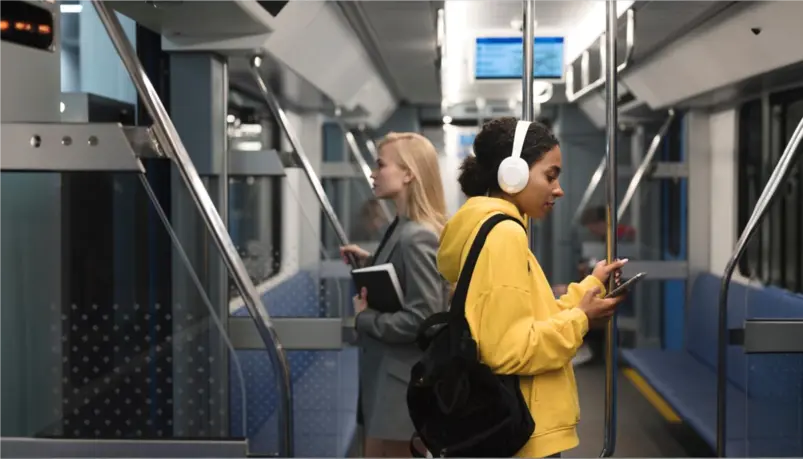Traffic and public transport are fundamental pillars of a municipality’s vitality. A well-functioning transportation network and a comprehensive public transport system provide residents with an easy, safe, and environmentally friendly way to travel. When traffic operates efficiently, commuting to work, traveling to school, and enjoying leisure activities become hassle-free, ensuring that the municipality remains vibrant and accessible. It is the municipality’s responsibility to ensure that all forms of mobility are easily available to residents, thereby supporting sustainable development and enhancing the well-being of the community.
Public Transport as an Everyday Convenience
Public transport plays a central role in the municipality’s transportation system by offering a cost-effective and environmentally friendly alternative to private car use. A well-planned and extensive public transport network reduces traffic congestion, improves air quality, and minimizes the carbon footprint. At the same time, it promotes equal mobility for all residents by providing those without a car the opportunity to travel smoothly.
The municipality should invest in the accessibility of public transport so that it serves residents living in more remote areas and connects all key destinations, such as schools, healthcare facilities, and employment centers. Additionally, ticket prices should be reasonable to make public transport an attractive option for everyone. The aim is to develop a public transport system that is reliable, efficient, and empowers residents to travel conveniently from their starting points.
Environmentally Friendly Transport Choices
Combating climate change requires concrete actions in the transportation sector. Therefore, the municipality must promote environmentally friendly modes of transport and work to reduce emissions. This could involve measures such as electrifying public transport, improving infrastructure for cycling and walking, and supporting sustainable mobility through various incentives.
Enhancing conditions for active modes of transport is a key aspect of sustainable transportation policy. Quality sidewalks, bike lanes, and safe pedestrian crossings make walking and cycling attractive options, reducing the need for short car trips. Furthermore, as the number of electric vehicles and car-sharing services continues to grow, it is essential for the municipality to ensure that there is adequate infrastructure—such as charging stations—to support these new mobility solutions.
Safety as a Top Priority
Traffic safety is the foremost priority in municipal transportation planning. A safe traffic environment is one where drivers, pedestrians, and cyclists can move with confidence. This requires traffic management solutions that ensure sufficient visibility, clear signage, and proper lighting, especially in busy areas and at crosswalks.
Safety also encompasses effective winter maintenance. Measures such as ice control, snow removal, and sanding are crucial during winter to allow residents to travel safely on foot, by bicycle, or in a vehicle. Regular maintenance reduces accident risks and keeps traffic flowing smoothly, even under challenging weather conditions.
Accessibility and Inclusiveness
Transportation and public transport must be accessible to all residents. Accessibility is especially important for the elderly, those with disabilities, and people using strollers. Public transport services should ensure that vehicles and stations are barrier-free and easy for everyone to use. The same applies to roads, sidewalks, and crosswalks, which must be designed so that every resident can move independently and safely.
Accessibility also means that residents have easy access to public transport, with sufficiently frequent service intervals that meet daily needs. The municipality should ensure that even those living in more remote areas have the opportunity for smooth and affordable mobility.
Smart Solutions for Transport Development
Digitalization and technological advancements can bring significant improvements to both traffic management and public transport. Intelligent transportation systems—such as real-time route planning, digital display boards at stops, and predictive public transport applications—can enhance the overall experience and make travel more seamless.
For example, in managing congestion, smart traffic lights and real-time traffic information can direct vehicles more efficiently and reduce bottlenecks. There are also intelligent solutions for parking management that streamline the search for parking spaces, reducing unnecessary driving and congestion.
Traffic and Public Transport as Part of Our Municipality’s Future
A well-functioning transportation and public transport system makes the municipality attractive and simplifies everyday life for residents. I want to contribute to developing a transportation system that is safe, environmentally friendly, and accessible to all. Smooth mobility lays the foundation for a vibrant and pleasant community—let’s work together to make it a reality!


